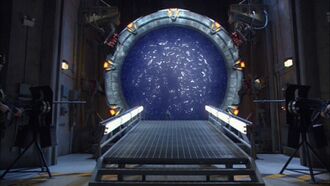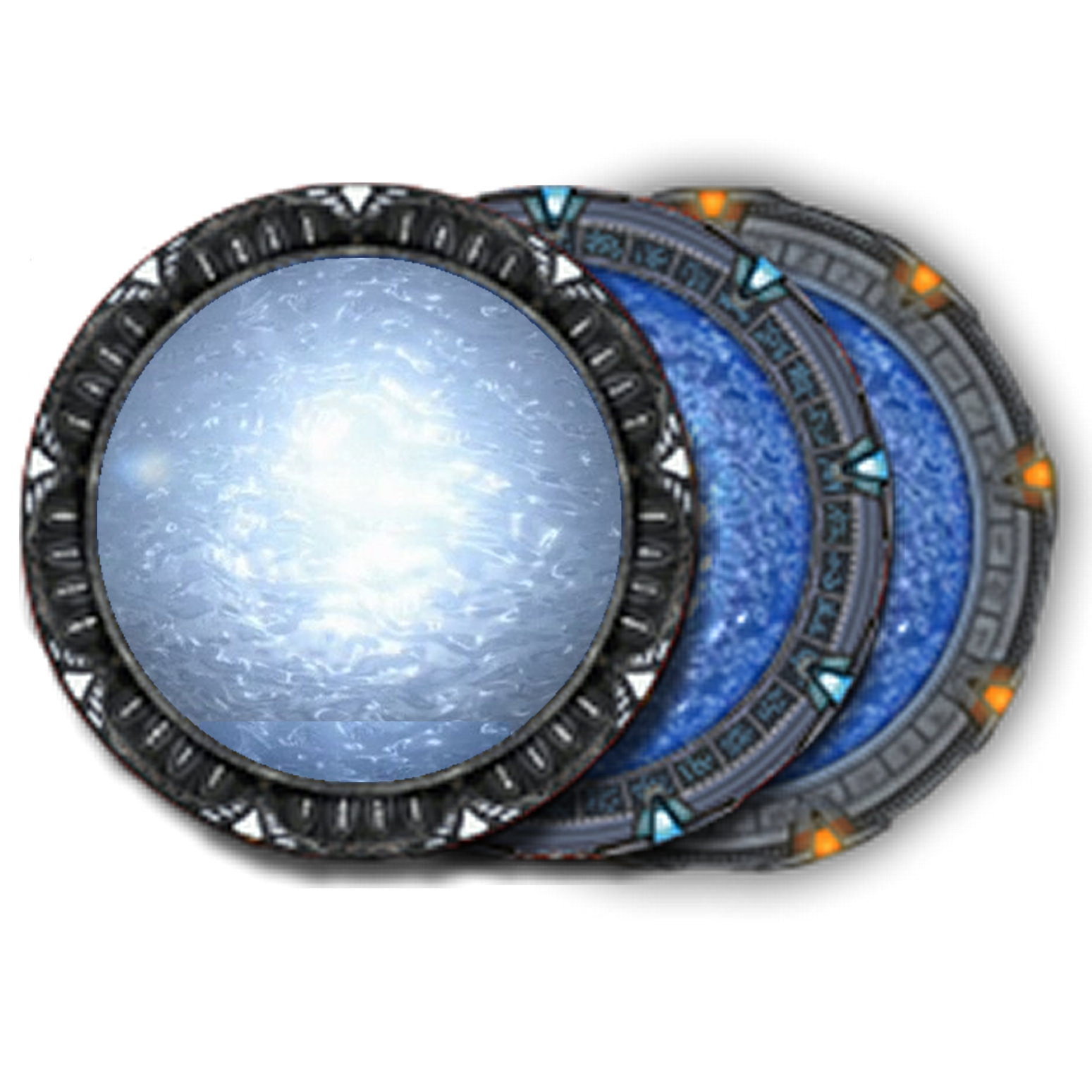Stargate: Difference between revisions
m (→Designations) |
m (→Designations) |
||
| Line 52: | Line 52: | ||
* The [[Jaffa]], [[Goa'uld]] and some people under Goa'uld domination call the Stargate "Chappa'ai" ([[SG1]]: {{ep|Children of the Gods}}). | * The [[Jaffa]], [[Goa'uld]] and some people under Goa'uld domination call the Stargate "Chappa'ai" ([[SG1]]: {{ep|Children of the Gods}}). | ||
* The [[Tegalan]]s call it the "Great Ring of Avidan". The Tegalan Stargate has been | * The [[Tegalan]]s call it the "Great Ring of Avidan". The Tegalan Stargate has been excavated circa [[1854]] in the [[Kirellian wastelands]]. It has become the main attraction of the [[Rand Protectorate Museum]] until [[SG-1]]'s arrival in [[2004]] ([[SG1]]: {{ep|Icon}}). | ||
== Notes == | == Notes == | ||
Latest revision as of 12:26, 1 October 2017
| Stargate | |
|---|---|
 A Stargate in use | |
| Production information | |
| Manufacturer | |
| Designer | |
| Technical specifications | |
| Control systems |
Dial Home Device Dialing computer Ancient remote control |
| Function | Interplanetary transportation |
| Material | Naquadah |
| Usage | |
| Year introduced | several millions years ago |
A Stargate, also called Astria Porta by the Ancients and Chappa'ai by the Goa'uld, is an Ancient device used to make interplanetary travels.
Overview
Purpose
The Stargate has been designed to travel almost instantaneously from one planet to another, using a stable wormhole established between two gates. When a person or an object passes through the Stargate, he/it dematerializes on the first end and rematerializes in the other end. Audio and video communication waves can pass through from both sides of the Stargate when the wormhole is established.
History
Over 50 millions years ago, Amelius, an Alteran, sketched an idea of instantaneous transportation just the night the Alterans left their home to flee from the Ori to save their lives (Stargate: The Ark of Truth, SG1: "Frozen"). After their settlement in the Milky Way galaxy, The Alterans, known now as the Ancients, started to build an automated starship, Destiny, and several seed ships to explore galaxies, gather informations, and build a first Stargate network, like a prototype. Destiny had its own Stargate on board with one address available to reach the ship. The seed ships have a Stargate manufacture (SGU: "Air", Part 1, "The Stargate Room", "Awakening").
Around 50 millions years ago, the Ancients started to spread life in the Milky Way galaxy and seeded several Stargates on many planets to form another network in the galaxy. The network extended to other galaxies like Ida when they met the Asgards (SG1: "Frozen", "The Fifth Race").
Between 5 to 10 millions years ago, the Ancients had to flee the Milky Way once again due to a plague which had nearly wiped out the entire race. They used the city-ship Atlantis to reach the Pegasus galaxy. They landed on Lantea and once again, spreaded life accross the galaxy and built a new Stargate network.
10,000 years ago, after a lasting war against the Wraith, the Lantians left Atlantis and came back to Earth from the Stargate. The Atlantis Stargate was the only Stargate capable to dial Earth's Stargate (SGA: "Rising", Part 1, "Before I Sleep").
During the times, some races have learned to use the Stargate, like the Goa'uld, the Wraith, and many Pegasus galaxy inhabitants as well as some Milky Way inhabitants.
In 8,000 BC, the Goa'uld Supreme System Lord Ra brought another Stargate on Earth in the Giza Plateau and started to move primitives on several other Milky Way planets as slaves to extract naquadah from mines. Around 3,000 BC, Ancient Egyptians began to rebel and buried the Stargate. In 1928, Professor Langford discovered the Stargate where it was buried (Stargate, SG1: "Moebius", Part 2).
Designations
- The Jaffa, Goa'uld and some people under Goa'uld domination call the Stargate "Chappa'ai" (SG1: "Children of the Gods").
- The Tegalans call it the "Great Ring of Avidan". The Tegalan Stargate has been excavated circa 1854 in the Kirellian wastelands. It has become the main attraction of the Rand Protectorate Museum until SG-1's arrival in 2004 (SG1: "Icon").

